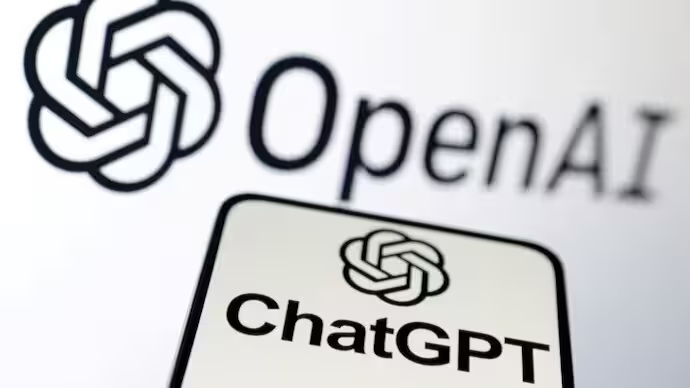OpenAI’s ChatGPT, known for reshaping how people interact with artificial intelligence, is reportedly testing a new and intriguing feature: “Study Together.” While the company hasn’t yet officially announced the function, early access users and internet sleuths have begun to spot references to it, sparking curiosity and debate about what exactly the new feature entails.
The Rise of Collaborative AI Use
ChatGPT has evolved rapidly since its initial release, with capabilities ranging from simple chatbot conversations to writing code, composing essays, and providing emotional support. It has become a personal assistant, tutor, writing partner, and brainstorming buddy rolled into one. Now, OpenAI seems to be aiming for something even more social and collaborative.
The name “Study Together” suggests a departure from ChatGPT’s traditionally one-on-one interaction model. Instead of using the AI in isolation, this feature might enable multiple users to engage with the AI at the same time—or allow users to collaborate in a shared virtual workspace designed for learning, productivity, or tutoring.
What Could “Study Together” Mean?
Since details remain scarce, the possibilities are wide open. However, the name and recent leaks point toward a few likely scenarios:
1. Real-Time Collaborative Study Sessions
This would allow multiple users—possibly students or study partners—to join the same chat room or interface where they can pose questions, solve problems, or discuss topics together with the help of ChatGPT. The AI would serve as a facilitator, answering questions, explaining difficult concepts, or suggesting resources, all in real time.
Such a setup would make ChatGPT more than just a private assistant—it would become a shared digital tutor, similar to a group study leader who never gets tired and knows almost everything.
2. Live Tutoring with AI Support
Another possibility is that “Study Together” is aimed at teachers or tutors working with students in real time. A teacher might guide the session while ChatGPT provides instant summaries, translations, or additional explanations on command. This could significantly enhance digital classrooms, particularly in remote or hybrid learning environments.
3. Focus Rooms or Study Timer Modes
Borrowing from productivity apps, “Study Together” might also incorporate a Pomodoro-style timer, virtual accountability rooms, or AI-generated study plans. Users could be matched with others based on subjects or interests, then work silently or with occasional AI-generated prompts to stay on track.
4. Shared Notetaking and Resources
An underrated but powerful aspect of such a feature could be its ability to allow users to build shared study materials. Whether it’s creating flashcards, summaries, or annotated readings, ChatGPT could facilitate and organize the process, offering outputs that are structured and easy to review.
Why Now?
The timing of this experimental feature makes sense given the larger context of AI adoption in education and productivity. In the post-pandemic world, remote learning has gone from being a niche practice to a normalized part of global education. Online study groups, digital flashcard apps, and focus tools like Forest and Notion have seen explosive growth. OpenAI may be looking to integrate elements of all these tools into one seamless AI-powered experience.
Additionally, the company faces growing competition from other AI models and apps. Offering an innovative feature like “Study Together” could further cement ChatGPT’s place as the leading AI companion, especially among students, knowledge workers, and lifelong learners.
Potential Benefits of “Study Together”
If executed well, the feature could unlock several advantages:
-
Enhanced engagement: Studying with peers or in guided sessions often increases retention and reduces the mental fatigue that comes from solo study marathons.
-
Peer support: With ChatGPT acting as both moderator and assistant, users could benefit from shared insights and moral support in a low-pressure environment.
-
Increased accessibility: Those who can’t afford private tutoring or attend expensive institutions might find this feature an equalizing force in their educational journey.
-
Customizable learning: Users could potentially choose subjects, set goals, and receive tailored plans to match their unique learning pace and style.
The Element of Mystery
Despite all the speculation, one thing remains clear: OpenAI is playing this one close to the chest. Users have only spotted brief mentions of the feature in the app interface or read about it in support documents. The lack of an official announcement adds a layer of intrigue—and potentially signals that it’s still in early testing stages or being rolled out to a limited group for feedback.
That mystery may be intentional. In a market where AI innovations are rapidly imitated, OpenAI might be using a “soft launch” strategy to fine-tune the concept before going public. Or perhaps they are gauging community reaction to decide whether “Study Together” will become a staple feature or a scrapped experiment.
The Risks and Considerations
As promising as it sounds, “Study Together” would need to address several challenges:
-
Privacy: Sharing a workspace with others—even in a moderated AI environment—raises questions about data sharing and user privacy.
-
Moderation: In a live, shared chat setting, how would inappropriate behavior be managed?
-
Misinformation: Even with its advanced capabilities, ChatGPT is not infallible. Ensuring that learners aren’t misled by incorrect answers or oversimplified explanations will be crucial.
A Glimpse into the Future
Whether it ends up being a revolutionary tool or a limited experiment, “Study Together” signals something bigger: OpenAI is thinking beyond individual use cases. They’re imagining AI as a collaborative medium—not just a tool to assist a user, but a bridge between users themselves.
If successful, this feature could redefine how students study, how tutors teach, and how people learn together in the digital age. It hints at a future where AI doesn’t just make us smarter individually—but more connected and collaborative as learners. And in an era increasingly defined by isolated screen time, that might be exactly what we need.



